Where is Princess Diana buried? Location of Princess of Wales’ grave, can you visit - when was her death
and live on Freeview channel 276
In August 1997, news of the death of Princess Diana shocked the world, sparking widespread public mourning. It may have now been more than two decades since Diana's death, but she stil remains the people's princess. For that reason, people still pay their respects to her every year on the anniversary of her death, August 31. For that reason, some may be curious about where the Princess of Wales was laid to rest and if the public can visit her grave. This is what you need to know.
When did Princess Diana die?
Princess Diana passed away on 31 August 1997 from injuries she sustained in a car crash that occurred in the Pont de l’Alma tunnel in Paris. Just after midnight, at 12:23am, the driver of the car, Henri Paul, lost control of the vehicle. It struck a passing Fiat before swerving and crashing head on with a pillar that supported the roof of the tunnel whilst travelling between 59 and 68 mph, roughly double the speed limit.
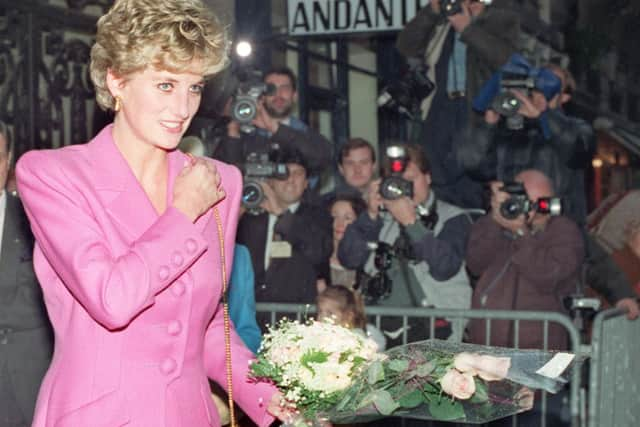

Advertisement
Advertisement
Her partner Dodi Fayed and the driver were both pronounced dead at the scene. Trevor Ree-Jones, their bodyguard, was severely injured but survived the crash. Princess Diana did not die at the scene of the crash, however, she passed a few hours later at the Pitié-Salpêtrière Hospital at 3am. At the time of the crash, Princess Diana’s car was being followed by members of the paparazzi, and the witnesses at the time reported that photographers on motorbikes had “swarmed the [car] before it entered the tunnel”.
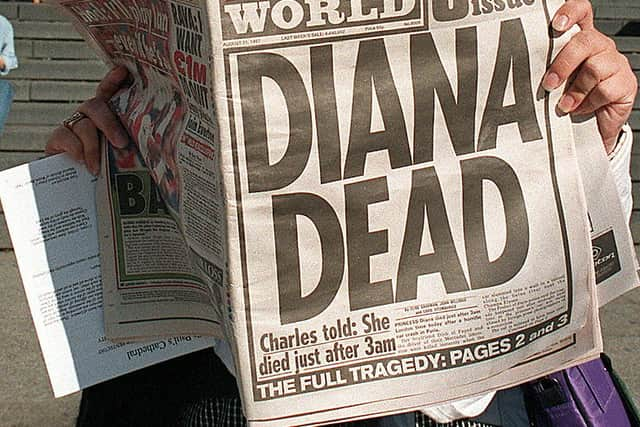

While it’s been said that the paparazzi were the main contributors to the incident, a French investigation held in 1999 found that Paul, the driver, had been driving at high speeds whilst under the influence of drugs and alcohol. The judicial investigation, which lasted 18 months and involved 30 police officers, 6,000 pages of evidence and 200 witnesses, found that “the vehicle’s driver was in a state of drunkenness and under the influence of medication incompatible with alcohol, a state that prevented him from keeping control of his vehicle when he was driving at high speed”.
When was her funeral?
Princess Diana’s funeral was held on Saturday 6 September 1997, beginning at 9:08am in London when the Westminster Abbey tenor bell began tolling. The bell signalled the departure of the procession from Kensington Palace. Her coffin was carried from the palace by the riders of the King’s Troop, and was escorted by mounted police along Hyde Park to St James’s Palace.
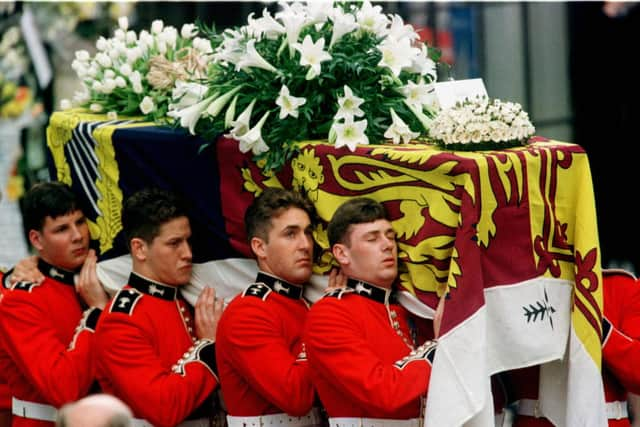

The official ceremony was held at Westminster Abbey, and saw an attendance of two thousand people. More than 32 million people in the UK watched the funeral on TV, with an estimated two billion people watching the event worldwide. During the service for Princess Diana, Elton John sang Candle in the Wind, which had been revised in tribute to the Princess.
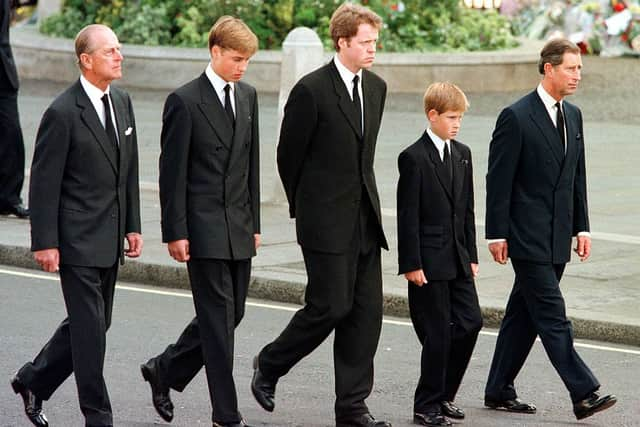

Advertisement
Advertisement
Her burial was held later that same day in a much more private capacity, with only her former husband Prince Charles, sons, mother, siblings, her best friend and a clergyman were present.
Where is Princess Diana buried?
After the ceremony at Westminster Abbey, Princess Diana was taken to an island at the centre of an ornamental lake called The Round Oval, on the grounds of her ancestral home Althorp Estate, in Northamptonshire, to be buried.
Originally, it was planned for Princess Diana to be buried in the Spencer family vault at the local church in Great Brington, but her brother, Earl Spencer, said that he was concerned about the public safety and security of her coffin, and that the masses of visitors would overwhelm Great Brington.
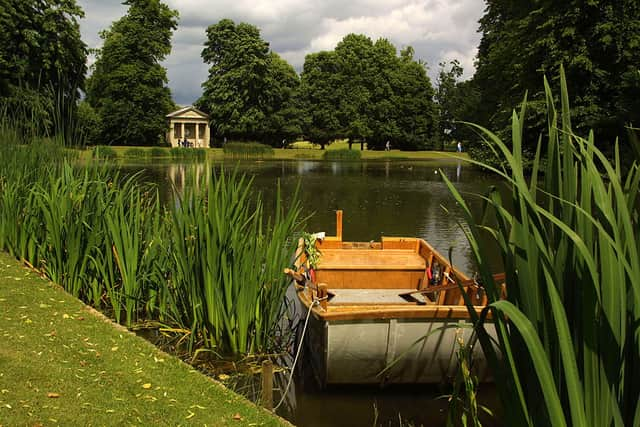

Lord Spencer decided that Princess Diana should be buried in a location where her grave could be “properly looked after by her family and visited in privacy by her sons”.
Advertisement
Advertisement
The Round Oval is located within Althorp’s gardens, and a path with 36 oak trees, each marking one year of her life, leads the way to the Oval.
Can you visit her grave?
Each year, the estate and house, currently run by Princess Diana’s brother, are opened up to the public during the summer months.
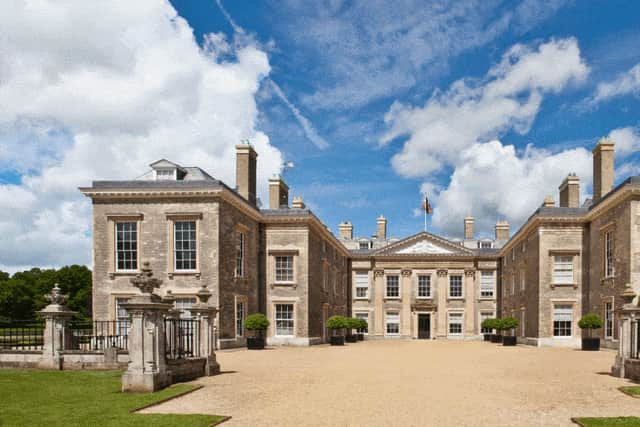

However, while members of the public can explore the house and its grounds, Princess Diana’s grave itself is off-limits. Back in 1998, her brother said that the lake would “act as a buffer against the interventions of the insane and ghoulish, the thick mud presenting a further line of defence”. Near the lake sits a temple in memory of Princess Diana that well-wishers can visit, which shares a quote from her and her silhouette.
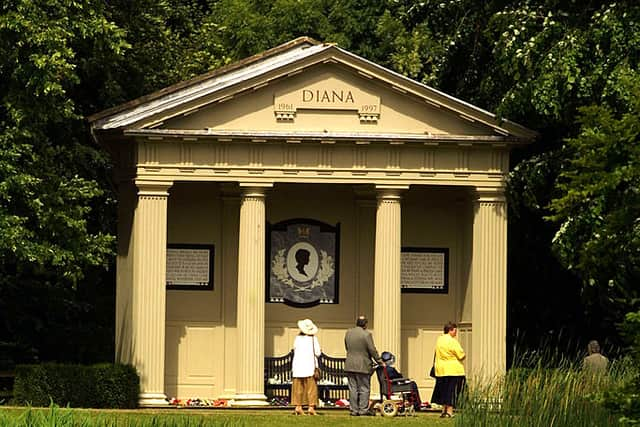

The quote reads: “Nothing brings me more happiness than trying to help the most vulnerable people in society. It is a goal and an essential part of my life - a kind of destiny. Whoever is in distress can call on me. I will come running wherever they are”.
Advertisement
Advertisement
Other featured quote on the memorial is from her brother’s speech at her funeral, which says: “We give thanks for the life of a woman I’m so proud to be able to call my sister: the unique, the complex, the extraordinary and irreplaceable Diana, whose beauty, both internal and external, will never be extinguished from our minds.”
Comment Guidelines
National World encourages reader discussion on our stories. User feedback, insights and back-and-forth exchanges add a rich layer of context to reporting. Please review our Community Guidelines before commenting.
